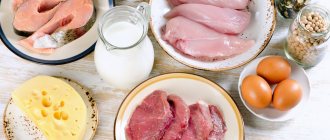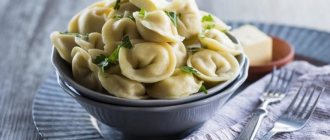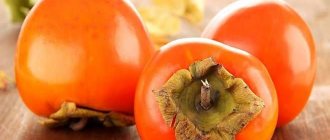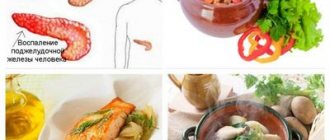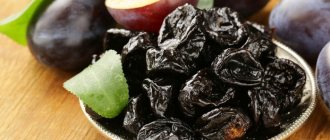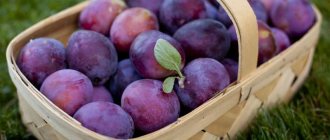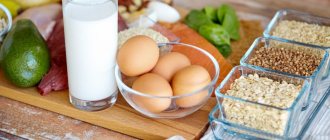From the ancient Greek word “pancreas,” which in ancient times was the name for the pancreas, is translated as “all made of meat.” The pancreas is an important part of the human body; thanks to the work of this organ, vital processes occur, such as the production of enzymes and the regulation of metabolic processes.
Chemical composition and calorie content of the product
The dried fruits of fleshy varieties of plums are sweet in taste, slightly tart, have a specific pleasant aroma with light notes of smoke, are characterized by a chemical composition rich in vitamins and minerals, as well as high calorie content.
Important! It is not recommended to use the product at night due to the laxative effect.
A 100-gram portion of the product contained 231 kcal.
The nutritional value of prunes is based on the diversity of their nutrients:
- proteins - 2.3 g;
- fats - 0.7 g;
- carbohydrates - 57.7 g;
- ash - 2 g;
- water - 25 g;
- dietary fiber - 9 g;
- starch - 0.6 g;
- sugar - 56.9 g;
- retinol (A) - 5 mcg;
- beta-carotene - 60 mcg;
- tocopherol (E) - 1.8 g;
- ascorbic acid (C) - 3 mcg;
- thiamine (B1) - 0.02 mg;
- riboflavin (B2) - 0.1 mg;
- niacin (PP) - 1.5 mg;
- potassium - 864 mg;
- calcium - 80 mg;
- magnesium - 102 mg;
- sodium - 10 mg;
- phosphorus - 83 mg;
- iron - 3 mg.
Also find out why prunes are good for women and how to properly consume prunes when losing weight.
Beneficial and harmful properties of prunes for the body
Prunes have an effect on the organs of the gastrointestinal tract, as well as the processes of blood formation and circulation. Experts recommend consuming it in small portions, preferably in the first half of the day.
- The product is useful for humans because:
- strengthens blood vessels and has a beneficial effect on the functioning of the cardiovascular system (recommended for hypertensive patients to normalize blood pressure);
- restores reduced performance;
- increases vitality and improves overall well-being;
- has a beneficial effect on the condition of the skin (provides a rejuvenating effect);
- stimulates bile secretion and also increases the amount of acids released into the intestines;
- has diuretic and laxative effects;
- strengthens the body's defenses;
- absorbs free radicals that have a harmful effect on the body (recommended for the prevention of cancer);
- normalizes the functioning of the nervous system, calms, helps cope with stress, eliminates anxiety, depressive mood;
- improves intestinal motility (therefore invaluable in the treatment of constipation, intestinal diseases, liver, kidneys);
- saturates the body with vital elements and vitamins (useful for iron deficiency anemia, vitamin deficiency, energy exhaustion);
- stimulates weight loss (this occurs due to the saturation of the body with fiber, which tends to increase in volume);
- cleanses the body of salts, toxins and toxic substances (the effect is ensured by sorbitol).
Important! It is better to dry prunes naturally, without additional procedures of coating with glycerin and blanching.
Excessive consumption of prunes is fraught with deterioration in health, bloating, increased blood sugar, flatulence, and heaviness in the stomach.
In remission
In what form can prunes be used in remission? Taking dried fruit will help stabilize the activity of many body systems: kidneys, heart, intestines. Restores water-salt metabolism. Due to the content of antioxidants, inflammatory processes are suppressed, including the pancreas.
taking prunes
There are rules for taking this healthy fruit for pancreatitis:
- You should eat no more than 10 fresh prunes per day. The characteristics of the body depend on tolerance.
- It is not recommended to drink concentrated compotes. It is diluted with water and no sugar is added during cooking.
- Wash and process the berries thoroughly.
- For the greatest value, you can cook prune compote with dried pears and dried apples and dried apricots.
In the chronic stage of pancreatitis, after taking prunes, the general condition is monitored to avoid side symptoms, and the state of carbohydrate metabolism is monitored.
Prunes for pancreatitis: is it possible or not?
Pancreatitis is manifested by severe cutting pain in the abdominal area and may be accompanied by high fever, diarrhea, nausea and vomiting. The patient often has a yellow coating on the tongue, a pale complexion, and blood pressure may rise or fall sharply.
Due to similar symptoms, many people confuse the initial stages of the disease with poisoning. Intoxication in the human body with pancreatitis occurs as a result of severe inflammation of the pancreas. It can occur in acute or chronic form.
The cause of the disease lies in the premature activation of enzymatic substances, which, due to aggressiveness towards the environment, begin to destroy it. This mechanism can be triggered by frequent overeating, consumption of copious amounts of fatty foods and alcohol. Also, the development of the disease is facilitated by malfunctions of the thyroid gland and liver.
During the period of illness, a strict diet is indicated, since the organs of the digestive tract become very sensitive to the food consumed. Due to these features, it is recommended for those suffering from pancreatitis to consume dried fruits. Such food helps replenish the body with the necessary nutrients, saturate it and strengthen it.
However, in uncontrolled quantities, the sugar and coarse fiber contained in prunes can overload the digestive system, aggravating the patient’s condition. In this regard, it is important to comply with the norm. Compote made from dried plums has a better effect on the inflamed organ.
Did you know? Plums in any form are loved in the UK. Every day, Queen Elizabeth II of England eats 2 fresh fruits grown in her own garden before breakfast.
What dried fruits can you eat while on a diet?
Dried fruits enriched with many vitamins.
Dried fruits are an important source of substances beneficial to the human body. People suffering from pancreatitis limit themselves to a large list of foods for a long time.
Eating dried fruits helps replenish the amount of vitamins and minerals that are lost along with foods that are forbidden to the patient.
Adding dried fruits to the diet is only available for chronic pancreatitis, and even then not all and in small quantities. Allowed to eat:
Rules for choosing a fresh product
Low-quality dried fruits will not bring benefit to the patient, but on the contrary, will provoke an exacerbation of the disease. For home drying of plums, the fleshy large fruits of the Hungarian variety are more suitable. The ripe harvest is thoroughly washed, pitted and dried in any available way.
To improve presentation and preservation, store-bought prunes are often coated with chemicals that have a detrimental effect on the human body.
In case of treatment, it is important to make the right choice of product. The following rules will help with this:
- Pay attention to the appearance of dried plums. They should be matte black, fleshy and elastic. Signs of poor quality include a glossy brown or dark gray tint. It appears as a result of treating fruits with poisonous insecticides. A shiny, oily surface indicates the presence of harmful dyes, which unscrupulous sellers used to try to mask external defects.
- People suffering from pancreatitis prefer fruits with seeds. They contain much more vitamins and microelements than purified ones.
- The prune skin must be intact, without damage, signs of rotting or mold. You should also avoid specimens with plaque and spotting of unknown origin.
- A high-quality product always has a pleasant smoky smell and is characterized by sweetness in taste, a slight sourness is acceptable. Prunes are not characterized by bitterness.
Did you know? In ancient times in the Balkans, every person who committed a serious offense had to plant a plum tree near the road. Only then could the priest absolve the guilty person of his sins.
Eating prunes
When including prunes in the menu of a person with pancreatitis, it is important to take into account the form of the disease, as well as the individual characteristics of the body, the tendency to allergic reactions and the general condition. Not only the permissible dosage, but also the technology for processing the product depends on this.
For acute pancreatitis
General weakness, nausea, sharp pain, rapid heartbeat, remains of undigested food in the stool are the main symptoms of acute pancreatitis. The peculiarity of this form of the disease lies in its vivid symptoms, which cannot be ignored.
Did you know? In China, plums are considered a symbol of winter. Moreover, each petal of a plum flower is assigned an individual meaning: peace, happiness, longevity, luck, prosperity
.
During an exacerbation, prunes are strictly contraindicated until the signs of a pancreatic attack are completely relieved. Usually his treatment takes place in a hospital setting. The ban is also relevant for 2 months after therapeutic measures.
After the specified time, patients are allowed prunes exclusively in pureed form. You can use it to make mousse, jelly, compote, or savory casserole. It is important to pay attention to the side effects of the product. If it causes bloating, flatulence, nausea, or pain, you should avoid it.
For chronic pancreatitis
This form of the disease occurs with less severe symptoms and is characterized by several stages:
- Initial - can last for a decade, accompanied by periodic pain that appears after eating and in connection with diet violations. Nausea, vomiting, diarrhea, and increased gas formation are also possible.
- Severe damage to the pancreas - accompanied by less intense pain. The fact is that with long-term chronic pancreatitis, the soft tissues of the inflamed organ die, reducing the production of hormones and enzymatic substances. Such patients often experience dry skin, general weakness, drowsiness, periodic diarrhea and weight loss.
At any of the stages described above, patients can consume prunes in limited quantities.
It is eaten whole and also chopped as part of dietary dishes. The daily portion of treats should not exceed 1-2 pieces. To make it easier to control the body’s positive or negative reaction to dried fruit, it is advisable to record the daily dynamics of well-being in a diary. If signs of exacerbation occur, the product is excluded from the patient’s diet.
Important! During the remission period of pancreatitis, you are allowed to eat up to 5 prunes.
Methods for diagnosing and treating pancreatitis
A blood test can help diagnose pancreatitis.
You can verify the presence of the disease after a thorough diagnosis, which includes:
- Blood analysis;
- Coprogram;
- Checking the pancreas, liver, bile ducts and gallbladder using ultrasound;
- Computed tomography of the abdominal organs.
Treatment is prescribed by the doctor depending on the severity of the disease. Mild pancreatitis can be cured by following a special diet for a few days.
In case of complications, the patient is provided with intravenous nutrition for 3–5 weeks. In more severe forms of the disease, the patient requires mandatory hospitalization and sometimes surgery. In case of pancreatitis, it is strictly prohibited:
- Alcoholic drinks;
- Fast food;
- Food with hot spices and seasonings;
- Fatty fish;
- Canned foods;
- Coffee, strong tea, cocoa;
- Carbonated drinks;
- Citrus;
- Yogurts, full-fat sour cream;
- Chocolate, biscuits, caramel;
- Sausage, sausages;
- Rye bread;
- Radishes, spinach, sorrel.
One of the main points of treatment is the content of the diet. When treating pancreatitis, for the first four days the patient should refuse food altogether and drink only warm water without gas. The next stage is to start carefully consuming healthy foods.
Diet No. 5 is considered generally accepted in treatment, the essence of which is the refusal of food, which increases the formation of acid in the stomach and provokes pancreatic enzymes to work actively. It is permissible to eat:
- Vegetables;
- Lean meat, fish and poultry;
- Porridges cooked in water or milk (except wheat);
- Non-acidic dairy products;
- Mild cheese;
- Boiled vermicelli;
- Baked apples;
- Vegetable soups;
- Wheat bread;
- In limited quantities jam, honey;
- In limited quantities, dry biscuits, marmalade, marshmallows;
- Weak tea, compote.
In case of serious complications, the patient must follow such a diet for 8 months, and after that, carefully plan his daily diet.
Contraindications and possible side effects
If you eat dried fruits uncontrollably, serious health risks cannot be ruled out.
- The product is contraindicated in:
- diabetes mellitus (increases blood sugar levels);
- obesity type II;
- lactation (provokes bloating and allergic reactions in the baby);
- urolithiasis (leads to exacerbation of the disease, blockage of the ureters);
- increased stomach acidity;
- acute forms of diseases of the gastrointestinal tract;
- flatulence.
The peculiarity of dried fruits is the abundant concentration of sugar and fiber. In small portions, such food is beneficial for the body, but in excess it can aggravate the patient’s condition. Monitor your well-being, consult a gastroenterologist in a timely manner and exercise a sense of proportion when consuming dried plums.
